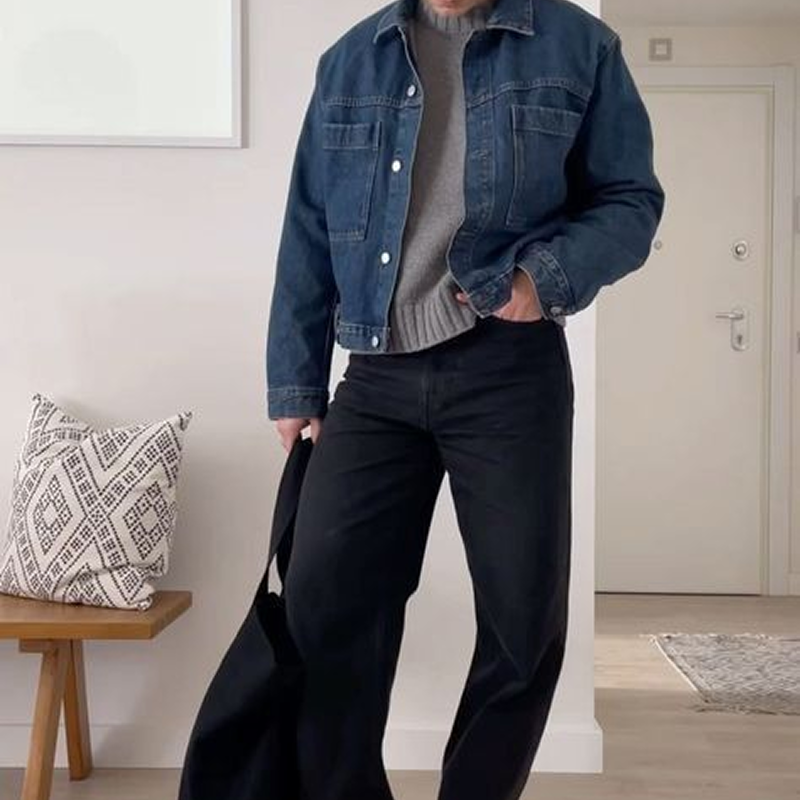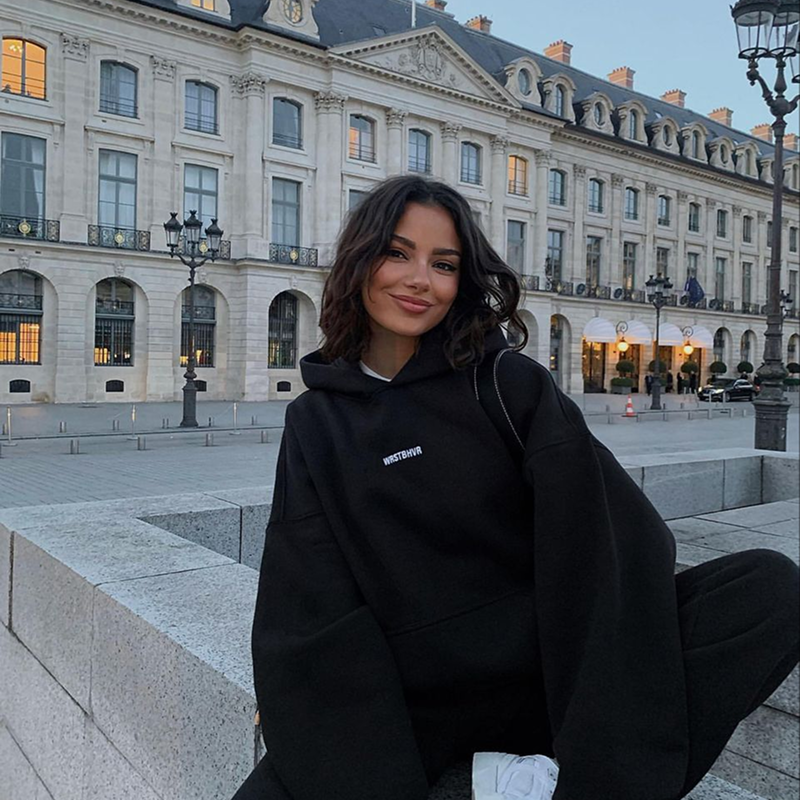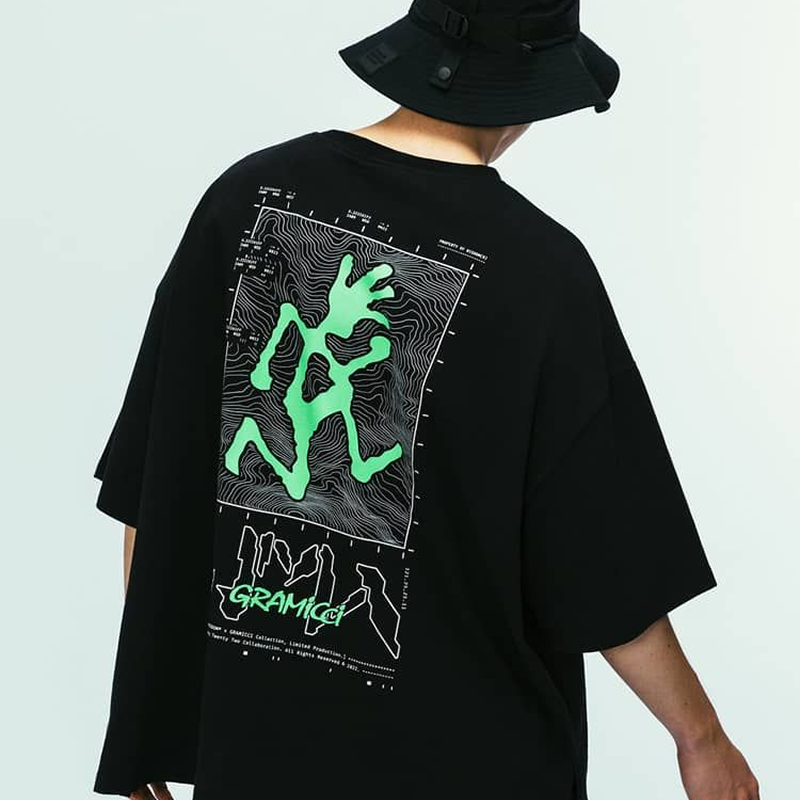A jacket isn’t just something you put on before you leave the house.
It’s how you enter a room.
The moment you slip it over your shoulders, posture changes. Movement shifts. You’re not just covered—you’re composed.
It’s armor, statement, and silhouette all at once.
In 2025, the jacket has evolved far beyond its utilitarian roots. It’s not just outerwear anymore—it’s a declaration of form. A study in balance between structure and soul. And in the age of minimalism, where restraint speaks louder than design, the modern jacket has become the ultimate expression of layered identity.
I. The Evolution of Intent
Once upon a time, jackets were uniform.
You wore a blazer to look respectable, a bomber to look tough, a denim jacket to look young. Each silhouette came with a social code. But today, those codes have collapsed. The jacket no longer defines the wearer—the wearer defines the jacket.
This shift is part of the greater cultural unlearning happening in menswear.
Fashion used to tell men who to be; now, men tell fashion what to become. The lines between formal and casual, work and leisure, have blurred into a continuous stream of personal style. And at the center of that stream sits the jacket—flexible, expressive, unapologetically individual.
Designers understand this. They’re not creating garments to impose identity. They’re crafting tools to enhance it. That’s why a single jacket can live multiple lives: streetwear at noon, minimalist art at dusk, quiet luxury by night.
II. Anatomy of Modern Elegance
The anatomy of a great jacket is a study in intention.
Every seam, every pocket, every stitch holds a story. It’s where function meets poetry.
Three characteristics define the modern jacket today:
- Shape as Architecture
Jackets now act like small buildings. They frame the body, define the shoulders, sculpt the torso. Think boxy silhouettes from brands like Our Legacy or COS, or cropped cuts from Jacquemus that play with proportion. The structure isn’t stiff—it’s strategic. - Material as Emotion
Fabric choices are narrative choices. A waxed cotton field jacket feels rugged and grounded. A suede trucker jacket whispers sophistication. A nylon shell exudes tech precision. In an age where touch equals truth, texture speaks before color does. - Silhouette as Language
Whether it’s oversized, cropped, elongated, or asymmetric, each cut carries an emotional tone. The relaxed bomber tells you this person values comfort and control. The tailored overshirt tells you they understand minimal form. The sharply cut leather jacket? That’s tension turned wearable.
The modern man doesn’t just wear his jacket.
He directs it—like a cinematographer crafting light around a subject.
III. The New Layering Philosophy
Layering used to be practical.
Now, it’s performative—an art form in itself.
In a world where every piece of clothing carries emotional weight, how we layer becomes how we narrate ourselves. Jackets serve as punctuation marks in that narrative: defining rhythm, volume, and emphasis.
Some of 2025’s most compelling layering techniques include:
- Light Over Heavy: Throwing a cropped technical jacket over a thick hoodie flips the expected. It creates a visual hierarchy that feels intentionally undone.
- Tone on Tone: Layering shades of the same palette—beige over cream, charcoal over slate—builds depth without noise. It’s quiet luxury at its cleanest.
- Mixing Textures: Denim with wool, leather with nylon, cotton with silk. Contrasting tactile sensations is what makes an outfit cinematic.
- Functional Layering: Modular outerwear—jackets with removable liners, zip-off hoods, hidden vents—speaks to a new generation that values adaptability over excess.
Layering has become the grammar of style.
And the jacket is the comma that keeps everything flowing.
IV. From Street to Studio
Walk through any creative neighborhood—SoHo, Shibuya, Shoreditch, or Saigon’s District 1—and you’ll see how jackets have adapted to different tribes of expression.
1. The Street Code
The streetwear jacket is more than outerwear; it’s street armor. Think oversized bombers with nylon sheen, cropped workwear pieces, or vintage varsity jackets reborn through modern tailoring. They carry nostalgia but feel future-forward.
A good streetwear jacket hangs loosely but never sloppily—it creates silhouette through intention, not accident.
2. The Studio Layer
Artists, designers, and photographers often lean toward lightweight overshirts or chore jackets. The appeal is freedom of movement and functional pockets—utility meets refinement. Brands like Arpenteur and AURALEE master this “creative uniform” perfectly. These jackets don’t shout—they frame the act of creation itself.
3. The Urban Nomad
In the techwear scene, jackets are interfaces.
Waterproof membranes, magnetic zips, hidden compartments—everything engineered for urban mobility. The aesthetic is cyber-functional, yet emotionally calm. Acronym, Guerilla-Group, and Nike ACG lead the genre, proving performance can still be poetic.
The throughline across all these cultures?
The jacket adapts. It absorbs environment, personality, and purpose—and translates it all into form.
V. Tailoring Reimagined
Tailoring isn’t dead. It’s been rewired.
Modern designers are taking the discipline of tailoring—the precision, the cut, the drape—and applying it to street silhouettes.
Picture this:
A double-breasted jacket in jersey cotton.
A structured blazer with elastic cuffs.
A bomber with lapels.
That’s not contradiction—it’s evolution.
Menswear in 2025 isn’t rejecting formality; it’s softening it. It’s making structure breathable again. This merging of tailoring and ease defines a new archetype: the relaxed sophisticate. Someone who values precision but rejects pretense.
Even luxury houses have embraced the hybrid. Lemaire, AMI Paris, and Bottega Veneta have mastered this tension—blurring the line between workwear and couture. A jacket today can be boardroom-ready at 9AM and gallery-appropriate by 7PM, without a costume change in between.
VI. The Return of Material Honesty
We’re living in the age of tactile authenticity.
Consumers no longer chase loud branding—they chase truth. A good jacket doesn’t need a logo; it needs integrity.
That’s why the best pieces today are made with material honesty.
Heavyweight twills, raw denim, washed leather, recycled nylon.
They look better as they age. They tell stories through wear.
Designers are prioritizing fabrics that breathe, move, and live.
A well-aged leather jacket, for instance, records its owner’s life—the creases, the sun, the rain. It becomes a diary in disguise. That’s what modern luxury is about: emotional patina, not perfection.
VII. The Genderless Shift
The jacket is inherently genderless. Always has been.
It shapes around the person, not the category. In today’s cultural climate—where fluidity and self-expression reign supreme—jackets have become the canvas for identity without boundaries.
Silhouettes once coded “masculine” now appear in womenswear editorials; cropped, cinched jackets migrate from womenswear into men’s collections. It’s all cross-pollination, all communication.
The result? A freer, more personal approach to outerwear.
It’s not about “his” or “hers”—it’s about energy.
That fluidity has made fashion finally feel human again.
VIII. The Color of Confidence
In 2025, color palettes have quieted—but they haven’t dulled.
Gone are the loud neons and clashing contrasts. Today’s jacket tones feel lived-in, reflective, earthy. Think:
- Charcoal and stone for restraint.
- Olive and rust for grounded warmth.
- Ivory and sand for understated sophistication.
- Ink blue for confidence without arrogance.
Monochrome layering is still king, but subtle contrasts—like a deep brown jacket over slate trousers—give just enough visual rhythm.
Because confidence now is not about being seen first.
It’s about being remembered last.
IX. Style as Stillness
The most stylish people today have one thing in common: stillness.
They don’t chase; they curate. Their wardrobes aren’t loud, but deeply considered. The modern jacket fits into this mindset seamlessly.
When you wear a piece that feels balanced—fabric, cut, proportion—you move differently.
You breathe differently.
That’s what style should do.
Luxury isn’t just material anymore—it’s mood.
And the jacket, more than any other garment, channels that mood perfectly. Whether it’s a crisp shacket over linen pants or a padded bomber with cropped trousers, it completes the sentence of your look with quiet punctuation.
X. The Future of Layered Identity
So, what’s next for the jacket?
Ironically, the answer isn’t innovation—it’s refinement. The future lies in smaller details, smarter construction, and emotional sustainability.
Expect to see:
- Regenerative materials replacing synthetics.
- Modular, transformable jackets that shift with climate.
- A return to local craft and repair culture.
- Minimal, timeless silhouettes meant to be worn for decades.
The future jacket won’t be fast, loud, or temporary.
It’ll be thoughtful, functional, and deeply personal. Because when fashion matures, it doesn’t scream—it whispers.
XI. The Final Layer
At the end of the day, the jacket represents what fashion truly is: transformation.
Not of who you are, but of how you feel in your own skin.
When you find your jacket—the one that sits right, feels right, moves right—it becomes more than outerwear. It becomes presence.
You stop performing and start existing.
The jacket doesn’t need to make you someone else.
It just reminds you who you already are.
And that—more than trends, more than tailoring, more than design—is the purest form of style there is.



